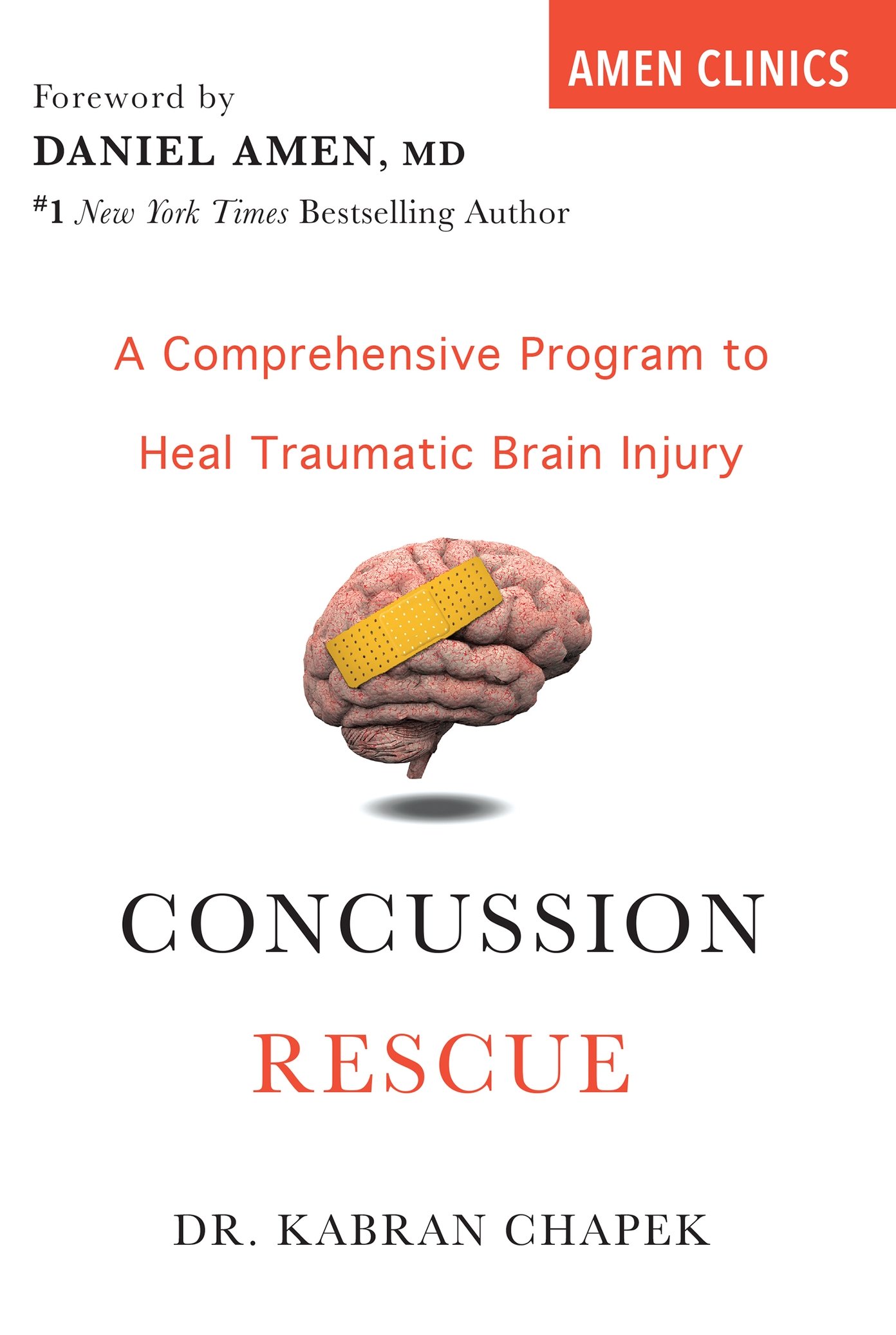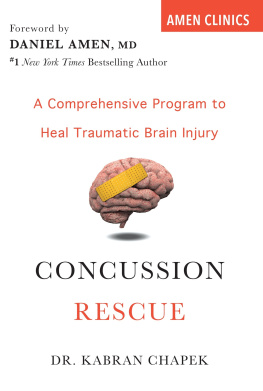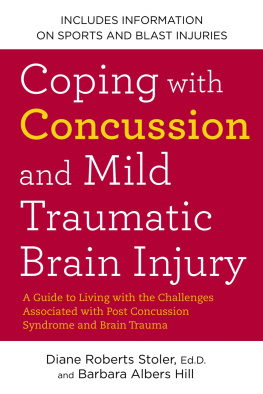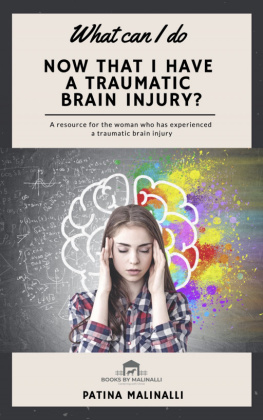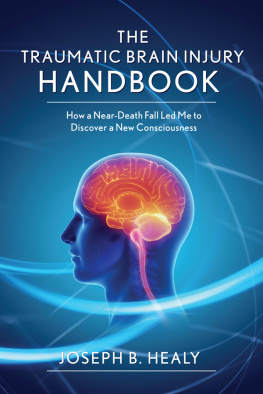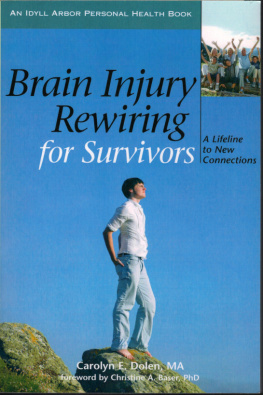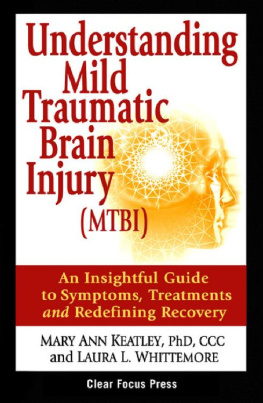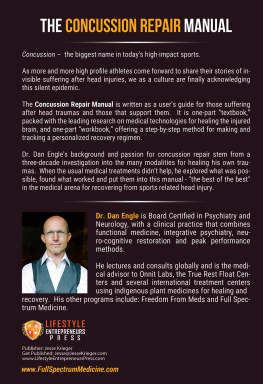BACK TO THE DRAWING BOARD
K evin was an energetic high school soccer player who reveled in every game and practice, a fierce competitor who broke up offensive attacks with aggressive sliding tackles on the field.
During a corner kick late in a scoreless game, Kevin positioned himself just outside the penalty box, knowing that his teammate would try to bend it like Beckham and give him a chance to headbutt the flying sphere into the back of the net. The corner kick came in high and fast, and a scrum of players from both teams converged on the ball.
As Kevin leaped high for a header, his head collided with another players skull. There was a sickening thud, and the youngster tumbled to the ground, where he cried out in pain.
Play stopped after the goalie collected the ball, and a half dozen players from both teams gathered around Kevin. He wasnt knocked unconscious, but as he pulled himself to his feet, he was woozy. He was led off the field, where his concerned parents were waiting. When Kevin failed to shake the cobwebs out of his head, his father and mother rushed him to the emergency room.
Following a long wait, a short examination, and a quick visit to the CT scanner, the ER doc informed Kevin and his parents that he would be just fine, based on the results of the CT scan. Kevin had suffered a concussion, the doctor said, explaining that a concussion was a form of mild traumatic brain injuryor TBI. Kevin and his parents were told that he should feel back to his old self in a few days or a few weeks, depending on the severity of the concussion. He was directed to watch and wait and take Tylenol for a headache, which is standard protocol in the traditional medicine world.
Instead of quickly recovering, as most teen boys do, Kevin experienced splitting headaches over the next few weeks that stretched into months. His headaches throbbed so much that he couldnt read more than a few lines of his textbooks at a time. When he fell further and further behind in his schoolwork, Kevin had to withdraw from school. Kevin ended up missing classes for several months because of his symptoms and became very depressed.
Kevins mom grew increasingly concerned and scheduled an appointment with me at the Amen Clinics in Bellevue, Washington. As a naturopathic doctor (ND), I had been seeing more and more post-concussion patients in recent years as parents sought treatment for their children who were not recovering from mild traumatic injuries. They hoped a more natural or alternative approach would be more effective.
As a doctor of naturopathic medicine, my goal is to treat the cause and heal the injury versus just recommending over-the-counter pain relievers and rest. Conventional doctors willingly admit that their medical bag is nearly empty when it comes to effective treatment options for mild traumatic brain injuries. However, as you can see, there is nothing mild about Kevins situation.
My first interview with Kevin did not go well for the young man. When I asked him to describe certain events from the previous day, his responses seemed slow and he had great difficulty remembering even simple things, like what he ate for breakfast. After putting him through a battery of tests and baseline cognitive testing, I immediately started Kevin on a treatment plan consisting of targeted nutrients. I prescribed a formula, based on research, consisting of specific amino acids, vitamins, and minerals shown to be helpful at improving healing from brain injury. I also recommended significant changes to his diet. When Kevins brain received the correct resources, he was able to move from a dysfunctional idling state into a more functional one within days. As Kevins headaches diminished, he began to regain his memory. Two weeks later, he was back in school and feeling much better about life.
On his next visit, he asked me a hard question: Will I be able to play soccer again?
I wouldnt want to roll the dice with your brain and your future, but the choice is ultimately up to you, I responded. To play soccer at the competitive level that he was used to playing, I said, would mean risking another concussion and therefore permanent brain injury.
Kevin nodded to signal that he understood, but I could tell he was processing what this meant to his days of playing a sport he loved. Although it took him several weeks to get used to the idea, Kevin ultimately realized that he had gifts other than soccer. He decided to focus on academics and try playing noncontact sports in the future.
Concussions like the one Kevin suffered are all too common. The number of brain injuries sustained each year is in the millions and continues to grow. According to the Centers for Disease Control and Prevention (CDC), there were more than 2.5 million emergency room visits for a variety of brain injuries in 2010, the most recent year available for this vital research. A majority of those brain-related ER visits were from falls, unintentional blunt trauma (such as being hit by an object), vehicular accidents, and injuries suffered on the playing field. These days, its estimated that 10 percent of athletes will experience a concussion during their season, according to the Sports Concussion Institute.
Unfortunately, countless traumatic brain injuries go undiagnosed because many are brushed off as just a hit to the head, similar to what Kevin experienced. But thanks to increased media attention, like the movie Concussion , starring Will Smith as Dr. Bennet Omalu, the forensic pathologist credited with being the first to discover chronic traumatic encephalopathy (CTE), concussions are being taken more seriously. The word is getting out that repeated hits to the head and ensuing concussions cause long-term brain damage.
The identification of the problem is only half the battle, however. Although advances have been made in emergency neurosurgery, which has helped save thousands of lives, its well known among brain-injury researchers that we dont have effective treatments for brain injury. In fact, nearly all of the over thirty large-scale trials in this field over the past thirty years have failed to find an effective drug treatment for acute brain injury.
I believe the rising problem of traumatic brain injuries isnt being approached correctly, which is why its time to go back to the drawing board. Im not proposing that we start all over, but I feel we need to think differently about the way we approach brain injuries. We can start by looking at what happens with each individual brain injury and match each one with the right treatments.
At Amen Clinics we have a way of remembering to look at concussions in a comprehensive way using the mnemonic BRIGHT MINDS. Each letter stands for a different component that must be considered in order to have the best chance of healing from head injuries. In each chapter I will highlight the BRIGHT MINDS principles that are key to focus on in order to recover from a brain injury.
BBlood flow: After a hit to the head, blood vessels can be damaged, leading to decreased blood flow. This must be addressed as a core piece of healing from brain injuries. Also lack of exercise (less than twice a week) contributes to deficient blood flow and is a barrier to healing.
